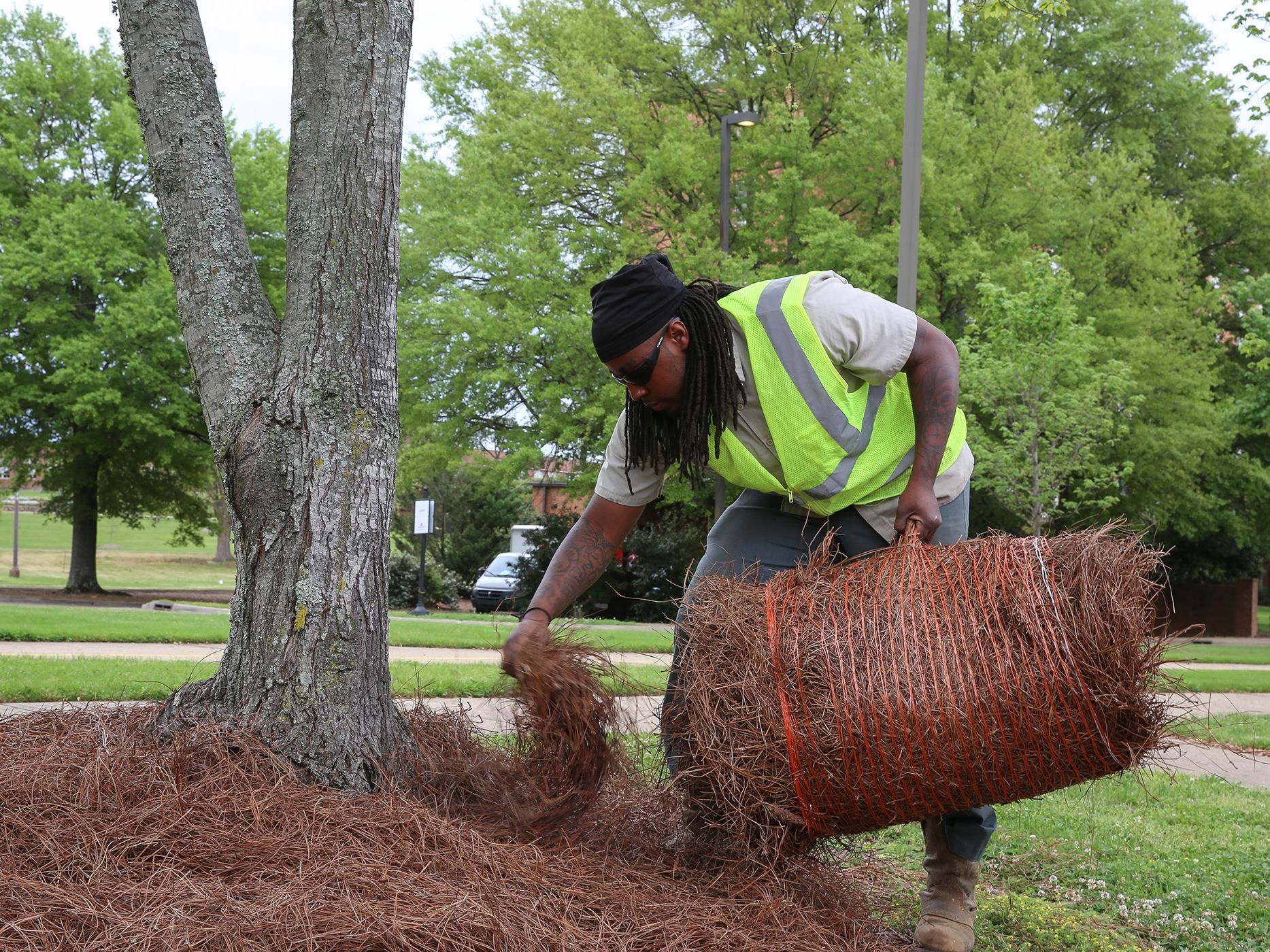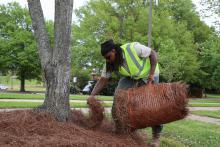Information Possibly Outdated
The information presented on this page was originally released on April 12, 2019. It may not be outdated, but please search our site for more current information. If you plan to quote or reference this information in a publication, please check with the Extension specialist or author before proceeding.
Pine growers attempt to rake in the profits
STARKVILLE, Miss. -- Times are tough for pine tree producers. Sawtimber prices have declined sharply over the past decade, while supplies have steadily increased -- an unfortunate scenario that has left many landowners looking for alternative sources of income.
Harvesting freshly fallen pine needles may be an excellent opportunity for them to generate additional income. Since the 1980s, landscaping companies have increasingly used pine straw as mulch because of its longevity, attractive appearance, light weight, ability to suppress weeds, and positive influence on soil moisture and fertility.
Several factors contribute to the price of pine straw. Straw rakers often offer premium prices for longleaf straw compared to loblolly or slash. Straw cleanliness is another major factor. Twigs, branches, herbaceous vegetation or hardwood litter lower the price.
Topography can also influence price. As a general rule, the less slope a stand has, the more likely a straw raker will want to harvest its needles. Stands located near large cities also typically receive higher bids for their straw because transportation costs to markets are lower than straw harvested in rural areas.
For pine tree owners, another desirable aspect of straw management is its compatibility with timber management. Due to their uniform spacing, pine plantations make ideal straw production sites. Peak straw production occurs between crown closure and the first thinning. Stands typically produce between 120 and 180 bales of straw per acre. Dry bales are generally 26 inches long, 13 inches wide and 14 inches thick. Higher quality sites produce more straw and can be raked more often.
Raking straw does, however, have some potential drawbacks. For example, harvesting pine straw causes the stand to lose key nutrients. To mitigate these losses, landowners can replenish nutrients by periodically applying fertilizer. Harvesting every third year or harvesting early in the peak needle season (September to November) are other options for minimizing nutrient loss.
Intense vegetation management is another drawback. Plantation understories must be kept clear of hardwoods, shrubs and herbaceous vegetation to produce clean straw. This activity requires frequent use of herbicides and prescribed fire to control unwanted vegetation. Such intensive management requires investment of time and money.
Pine straw has become an increasingly important forest product in the South. Whether pine straw raking is right for you depends on your stand characteristics and your ownership objectives.
For more information on pine straw management, please contact the Mississippi State University Forestry Extension or your county Extension office.

Editor’s Note: Extension Outdoors is a column authored by several different experts in the Mississippi State University Extension Service.






